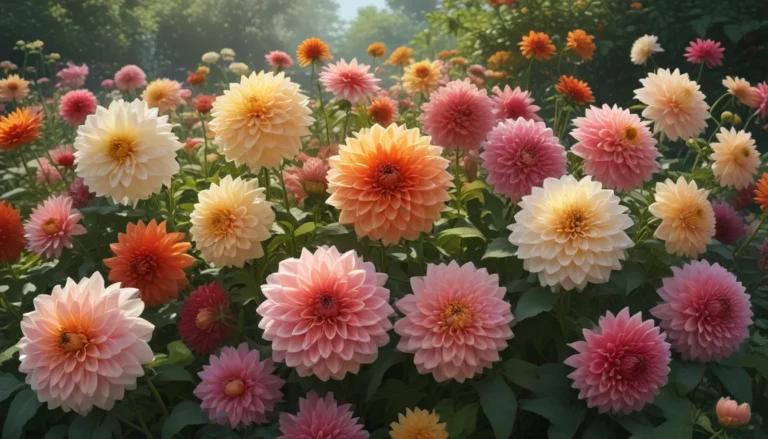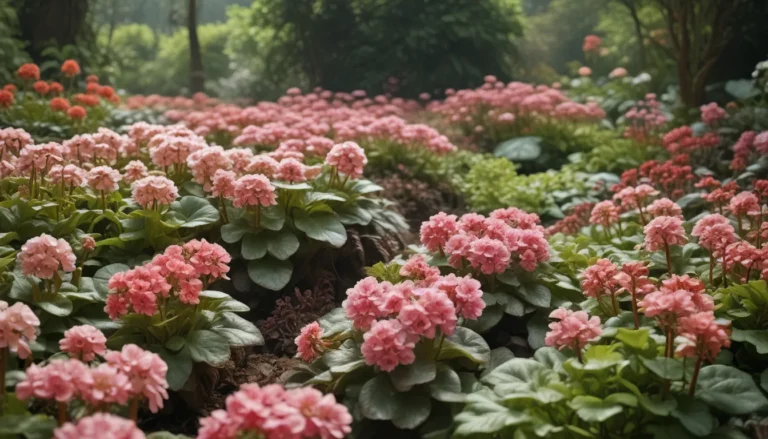A Comprehensive Guide to Growing ‘Sweet Dani’ Lemon Basil in Your Herb Garden

Basil is a beloved herb that’s a must-have in every herb garden. It’s known for being easy to grow and rewarding, offering intensely flavorful leaves with minimal effort. While most herb gardens include Thai or sweet basil varieties, if you’re looking for something unique, the lemony ‘Sweet Dani’ basil might just be what your garden needs.
‘Sweet Dani’ is a lemon cultivar that stands out for its incredibly strong lemon scent and flavor. With a taste that is both citrus-forward and slightly sweeter than other lemon varieties, this basil is not only delightful to grow but also more disease-resistant and vigorous than most other basils.
Whether you plan to use your homegrown herbs for tea, cocktails, pesto, or curry, ‘Sweet Dani’ is a cultivar well worth adding to your garden. In this in-depth guide, we’ll cover everything you need to know about growing, harvesting, and storing ‘Sweet Dani’ basil, with valuable tips and insights to help you succeed.
What You’ll Learn
- Cultivation and History
- Propagation
- How to Grow
- Growing Tips
- Maintenance
- Where to Buy
- Managing Pests and Disease
- Harvesting and Storage
- Recipes and Cooking Ideas
- Quick Reference Growing Guide
Let’s dive in and explore the world of ‘Sweet Dani’ lemon basil!
Cultivation and History
‘Sweet Dani’ is a relatively new cultivar that originated as a hybrid of sweet basil (Ocimum basilicum) and lemon basil (O. × citriodorum). Developed by Mario Morales and James E. Simon at Purdue University in the 1980s, this basil was the result of an experiment that aimed to create a unique ornamental basil by allowing different basil species to naturally crossbreed.
Through careful selection and refinement, ‘Sweet Dani’ was born in the mid-’90s and quickly gained popularity for its high citral content, which gives it its distinctive lemony aroma and flavor. The cultivar was even awarded the All American Selections Award in the vegetable category in 1998, solidifying its status as a garden favorite.
Named after Simon’s daughter Daniella, ‘Sweet Dani’ basil is a vigorous grower that reaches up to 30 inches tall and features petite white flowers. It thrives in USDA Hardiness Zones 4 through 9 as an annual and Zones 10 and 11 as a short-lived perennial, making it a versatile addition to any herb garden.
Propagation
Propagation of ‘Sweet Dani’ basil is straightforward and can be done through seeds, cuttings, or division. If starting from seeds, plant them indoors in pots or trays and move them outside once the air temperatures consistently stay above 60°F.
For a successful propagation, ensure your basil plants receive ample sunlight, maintain warm soil conditions, and provide proper care during the germination period. Consider dividing container plants or purchasing transplants for a quicker start to your ‘Sweet Dani’ basil garden.
How to Grow
When growing ‘Sweet Dani’ basil, ensure your plants are planted in well-draining, rich, loamy soil with a pH between 6.0 and 7.5. This basil cultivar thrives in full sun but can tolerate partial shade, though full sun exposure results in more compact and healthier growth.
For container gardening, ‘Sweet Dani’ basil is an excellent choice due to its manageable size and adaptability. Remember to keep the soil consistently moist but not waterlogged, as basil prefers soil that mimics a wrung-out sponge in terms of moisture levels.
Consider using ‘Sweet Dani’ basil alongside companion plants such as cilantro, chives, or tomatoes for a mutually beneficial garden space. Additionally, maintain regular care and monitor the plant for flowering, which should be pinched off to promote bushier growth and maintain leaf quality.
Growing Tips
- Plant in well-draining, rich, loamy soil.
- Opt for full sun or partial shade for healthy growth.
- Wait until the soil is warm to transplant outdoors.
Maintenance
To ensure a bountiful harvest of ‘Sweet Dani’ basil leaves, practice diligent maintenance by regularly pruning the plant and pinching off flowers. This encourages bushier growth and promotes continuous leaf production throughout the growing season.
Harvest leaves as needed, making sure not to defoliate the plant entirely to allow for new growth. Store harvested leaves fresh or consider drying or freezing them for extended use. ‘Sweet Dani’ basil can also self-seed, with the option to reserve seeds for future propagation or allow natural seeding in the garden.
Where to Buy
Seeds and transplants of ‘Sweet Dani’ basil are readily available at local garden centers, nurseries, and online retailers. For a convenient source, True Leaf Market offers ‘Sweet Dani’ basil seeds in various packet sizes to suit your gardening needs.
Managing Pests and Disease
While ‘Sweet Dani’ basil is relatively resistant to common basil pests and diseases, it may still encounter issues such as aphids, slugs, snails, Japanese beetles, and fungal diseases. Regular monitoring and preventive measures can help mitigate potential pest or disease problems in your basil garden.
Consider planting ‘Sweet Dani’ basil if your garden has struggled with downy mildew, as this cultivar exhibits increased resistance to this common disease. For detailed guidance on identifying and controlling basil pests and diseases, refer to our comprehensive basil growing guide.
Harvesting and Storage
Harvest ‘Sweet Dani’ basil leaves as needed to maintain plant health and encourage new growth. Avoid overharvesting and instead prune leaves in moderation to allow the plant to continue producing throughout the season.
Freshly picked basil leaves can be used immediately in cooking or preserved through drying or freezing for later use. Explore different methods of storing basil to maximize its shelf life and culinary versatility in your kitchen.
Recipes and Cooking Ideas
Lemon basil, such as ‘Sweet Dani,’ complements a variety of dishes and cuisines, showcasing its unique flavor profile in both savory and sweet recipes. From curries and stir-fries to desserts and beverages, there are endless possibilities for incorporating ‘Sweet Dani’ basil into your culinary creations.
Experiment with using ‘Sweet Dani’ basil in traditional dishes like pesto or fruit salad, or get creative with innovative recipes like basil-infused cocktails or basil-topped desserts. Visit food blogs or recipe websites for inspiration on how to make the most of your ‘Sweet Dani’ basil harvest in the kitchen.
Conclusion
‘Sweet Dani’ lemon basil is a standout cultivar that offers unparalleled lemony flavor, robust growth, and disease resistance, making it a valuable addition to any herb garden. By following the cultivation tips, maintenance guidelines, and culinary inspirations provided in this guide, you can successfully grow and enjoy ‘Sweet Dani’ basil in your own garden.
Whether you’re a seasoned herb gardener or a novice enthusiast, the versatile ‘Sweet Dani’ basil cultivar promises a rewarding gardening experience and delectable culinary opportunities for all. Share your favorite ‘Sweet Dani’ basil recipes and growing tips in the comments below to inspire fellow herb gardeners and culinary enthusiasts.
For more expert advice on growing herbs and enhancing your garden, explore additional articles on basil varieties, seasonal growing tips, and herb companion planting to expand your gardening knowledge and skills.
This educational article focuses on the cultivation, care, and culinary use of ‘Sweet Dani’ lemon basil. By adopting a conversational and informative style, incorporating relevant tips and insights, and expanding the content to include additional sections, the revised article aims to provide readers with a valuable resource for growing and enjoying this unique basil cultivar in their herb gardens.





